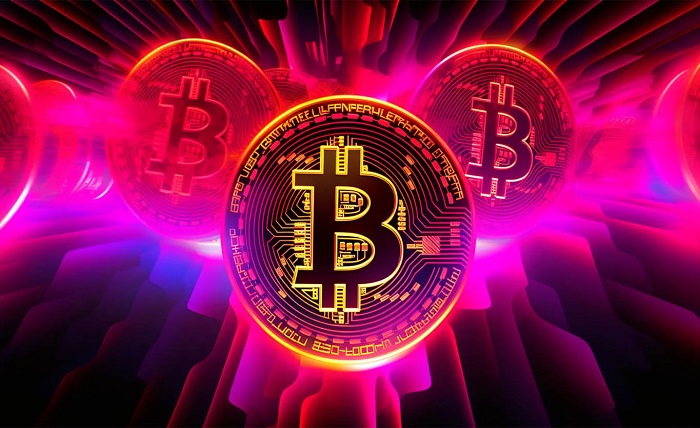Strong Crypto Price: What Factors Influence the Value of the Node Token?

Strong is a cryptocurrency that powers the StrongBlock protocol, a platform that rewards users for running nodes on various blockchain networks. Nodes are essential for the security and functionality of blockchains, but they are often underappreciated and underfunded. StrongBlock aims to solve this problem by creating a decentralized marketplace where node operators can monetize their services and node consumers can access reliable and high-quality nodes.
Strong is the native token of the StrongBlock protocol, and it serves as the medium of exchange and the incentive mechanism for the node ecosystem. Users can earn Strong tokens by running nodes, providing liquidity, or participating in governance. Users can also use Strong tokens to pay for node services, access premium features, or stake rewards.
The price of Strong is determined by the supply and demand of the token on the open market, as well as by various factors that affect its value proposition and utility. In this blog post, we will explore some of these factors, such as the treasury value, the rebase rate, the market sentiment, and the protocol development.
What is the Treasury Value?
The treasury value is the total value of all the assets held by the StrongBlock treasury. The treasury is composed of various cryptocurrencies, such as ETH, BTC, USDC, and LINK, as well as other tokens, such as UNI, AAVE, SNX, and YFI. The treasury also holds a portion of the Strong tokens that are minted by the protocol.
The treasury value represents the backing and the collateral for each Strong token. The higher the treasury value, the higher the redemption value and the security of Strong. The treasury value can increase from various sources, such as:
- Bonding: Users can exchange other assets, such as ETH or USDC, for discounted Strong tokens. The exchanged assets are then added to the treasury, increasing its value and diversification.
- Fees: Users who pay for node services with Strong tokens are charged a 10% fee. Half of this fee is burned, reducing the supply of Strong tokens. The other half is added to the treasury, increasing its value and income.
- Investments: The treasury can invest some of its assets in other protocols or platforms that offer yield or growth opportunities. The treasury can also lend or borrow some of its assets to generate interest or leverage.
What is the Rebase Rate?
The rebase rate is the percentage change in the supply of Strong tokens per epoch (eight hours). The rebase rate determines the amount of rewards that stakers receive for holding Strong tokens. The higher the rebase rate, the higher the incentive and the demand for Strong tokens.
The rebase rate is calculated by a formula that takes into account the treasury value, the total supply, and the target price of Strong. The target price of Strong is initially set at 200 USDC, which is the minimum value that each Strong token can have. However, Strong is not pegged to 200 USDC or any other fiat currency. Strong is a floating currency that can appreciate or depreciate depending on the market forces.
The target price serves as a price floor that ensures that Strong holders always have a guaranteed redemption value for their tokens. The actual market price of Strong can be higher than the target price, reflecting the premium that users are willing to pay for holding Strong.
Read more about overwatchpatchnotes
What is the Market Sentiment?
The market sentiment is the collective attitude and expectation of the users and investors towards StrongBlock and Strong. The market sentiment influences the supply and demand of Strong on the open market. The higher the market sentiment, the higher the premium and the price of Strong. The market sentiment can be affected by various factors such as news, events, partnerships, competitors, regulations, and trends.
Some of these factors are:
- News: News articles or reports that cover StrongBlock or Strong can have a positive or negative impact on their reputation and awareness. News can also provide information or insights that can influence users’ decisions or opinions.
- Events: Events such as live streams, AMAs, podcasts, webinars, or conferences that feature StrongBlock or Strong can have a positive or negative impact on their exposure and engagement. Events can also provide opportunities or challenges that can influence users’ actions or reactions.
- Partnerships: Partnerships with other protocols or platforms that integrate or collaborate with StrongBlock or Strong can have a positive or negative impact on their network effect and innovation. Partnerships can also provide benefits or risks that can influence users’ satisfaction or dissatisfaction.
- Competitors: Competitors that offer similar or alternative solutions to StrongBlock or Strong can have a positive or negative impact on their market share and differentiation. Competitors can also provide advantages or disadvantages that can influence users’ preference or aversion.
- Regulations: Regulations that affect or apply to StrongBlock or Strong can have a positive or negative impact on their legality and compliance. Regulations can also provide opportunities or threats that can influence users’ confidence or uncertainty.
What is the Protocol Development?
The protocol development is the progress and improvement of the StrongBlock protocol and its features and functionalities. The protocol development can have a positive or negative impact on the value proposition and utility of Strong. The protocol development can also provide solutions or problems that can influence users’ needs or wants.
Some of the aspects of the protocol development are:
- Roadmap: The roadmap is the plan and the vision of the StrongBlock team for the future of the protocol and the token. The roadmap can indicate the direction and the goals of the protocol development, as well as the timeline and the milestones of its execution.
- Updates: The updates are the changes and the enhancements that are made to the protocol and the token. The updates can include bug fixes, security patches, performance improvements, feature additions, or user interface modifications.
- Audits: The audits are the reviews and the evaluations that are performed by external parties to verify and validate the quality and the security of the protocol and the token. The audits can include code analysis, functionality testing, vulnerability scanning, or best practice compliance.
- Feedback: The feedback is the input and the opinion that are provided by the users and the community to the StrongBlock team regarding the protocol and the token. The feedback can include suggestions, complaints, compliments, or questions.
Conclusion
Strong is a cryptocurrency that rewards users for running nodes on various blockchain networks. Strong is backed by a diversified treasury of assets, rewarded by a variable rebase rate, and governed by a decentralized community. Strong offers passive income, price stability, and governance rights to its holders, but also exposes them to price volatility, protocol risk, regulatory risk, and opportunity cost. Strong is not for everyone, but for those who believe in its vision and value proposition, it can be a rewarding and exciting investment.
Read more about overwatchpatchnotes




